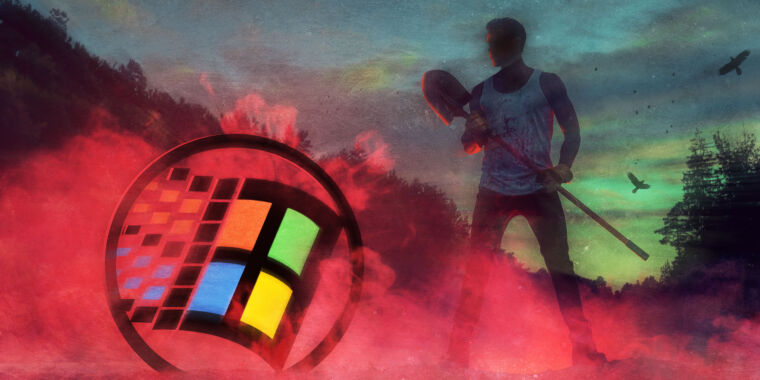Wait, it’s still alive???
It’s been running stuff like ATMs for years. And probably still will.
Well yeah, that much I know, but i thought it was unsupported. I always saw it as that weird version of windows 98 or XP for really small stuff
I’m not sure about ATMs, they often ran OS/2.
Windows CE often ran media centres or UI panels in things like John Deere tractors or the Fiat 500.
It was also the OS that ran the Dreamcasts UI.
Or XP Embedded.
From my own experience, I’ve also seen it on price checkers (Kmart Australia), navigation devices (Navman GPS units) and older Clarion head units.
It was heavily used on barcode scanning devices. I had my first few programming jobs using them.
I still see some of them around.
Good riddance!!
Barcode scanners is what popped into my head reading the title.
On a related note, I’m still annoyed microsoft bungled the windows phone and didn’t do more to support app developers. Arguably better than osx and certainly android at the time.
Loved my Windows Phones, I had three of them, and even released an app. I thought the app support, from a technical standpoint, was really good insofar as I could release the same app and have it run perfectly on phones, tablets and desktops. The issue I had with Windows Phones was how they just got steadily worse instead of better. They lost their uniqueness and became closer to Android clones with each iteration, and it was clear Microsoft weren’t fully behind the platform long before the app developers began to leave. Real shame.
time to upgrade my dremacast to 11
Would be pretty funny to use the Xbox app on Windows 10/11 running on a Sega Dreamcast. Well, I also put Android on my Nintendo Switch and installed the Xbox app, purely for fun.
How could even Microsoft release a product named WinCE? I’ve marveled at it for decades.
This is the best summary I could come up with:
Devices like the NEC MobilePro 200, Casio (Cassiopeia) A-10, and HP 300LX started appearing in late 1996 and early 1997, with tiny keyboards, more-landscape-than-landscape displays, and, by modern standards, an impressive number of ports.
By the time Ars Technica started mentioning Windows CE in 2003, it was well on its way to becoming Microsoft’s “Sure, we have an OS for that” solution.
It was the embedded “Windows CE for Smart Displays” OS for a ViewSonic airpanel V150p, which let you remotely control a desktop from something that you might, at an angle, call a tablet.
It was modified with “Windows XP extensions” to power a $250 AMD “Personal Internet Communicator” meant for “emerging markets” in 2004.
Still, in mid-2005, Windows CE was installed in nearly half the PDAs sold, with most of its share having been clawed out of Palm’s clutches.
Later that year, Palm announced that its newest device, the Treo 650, was running Windows Mobile.
The original article contains 380 words, the summary contains 157 words. Saved 59%. I’m a bot and I’m open source!
Windows ce looks like an interesting operating system being ran on almost anything I’m pretty sure they ran this on some cad infotainment systems
The number of things Microsoft turned to shit is impressive.





